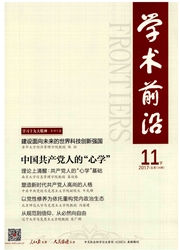

 中文摘要:
中文摘要:
南海断续线是中国在南海的领土主权、海洋权益的集中表达和形象概括,其国际法依据包括习惯国际法和《联合国海洋法公约》等。然而,在南海仲裁案中,菲律宾借助“三把斧”试图架空南海断续线的权利内涵。本文首先梳理和说明中国在断续线内各项合法权益的内涵与法理依据,接着结合对南海仲裁案裁决的分析,批驳菲律宾的诉求和仲裁庭的裁决结果。本文认为,仲裁庭否认中国在断续线内的历史性权利、中国南海诸岛的主权和海域权利的整体性以及太平岛等岛礁的岛屿地位的裁决,并无国际法上的依据,属于无效裁决,其对中国南海断续线的法律地位不产生实质性的影响。
 英文摘要:
英文摘要:
The Dashed-line map is a collective and symbolic expression of China's territorial sovereignty and maritime entitlements in the South China Sea, which finds its legal basis in customary international law and the 1982 United Nations Convention on the Law of the Sea. Nevertheless, the Philippines attempted to render the legal implication of the Dashed-line meaningless through the South China Sea Arbitration. This article first demonstrates the contents and jurisprudence of China's lawful rights and interests within the Dashed-line, before presenting its critical commentaries on the Philippines' demand and the Arbitration award. It's thus concluded that the Tribunal's denial of China's historical rights, sovereignty over the maritime features and the unity of China's claim to maritime zone entitlements as well as the status of Taiping (Itu Aba) as an island are unfounded in international law, and should be declared null and void. The legal status of the Dashed-line is therefore not substantially affected by the arbitration.
 同期刊论文项目
同期刊论文项目
 同项目期刊论文
同项目期刊论文
 期刊信息
期刊信息
